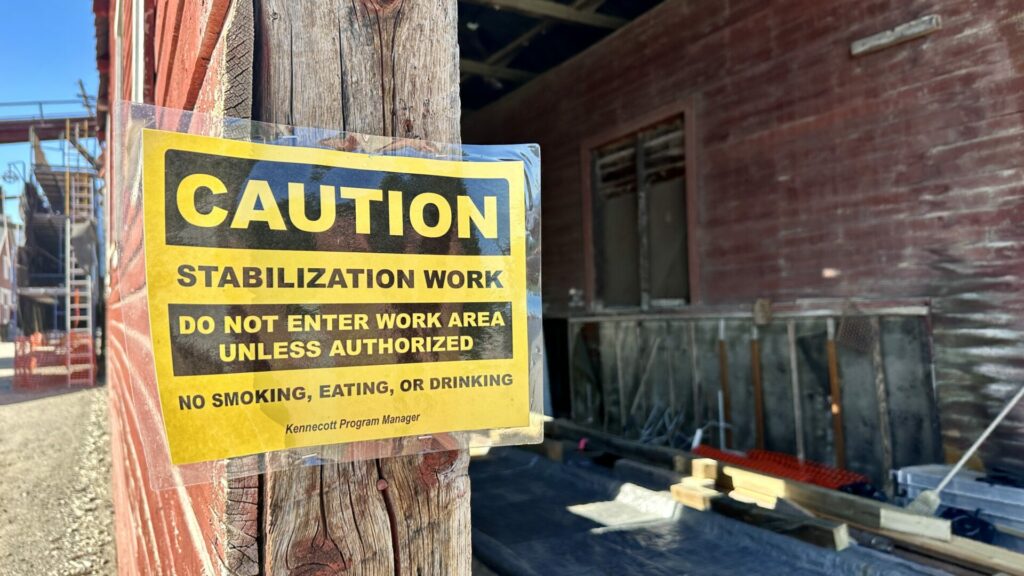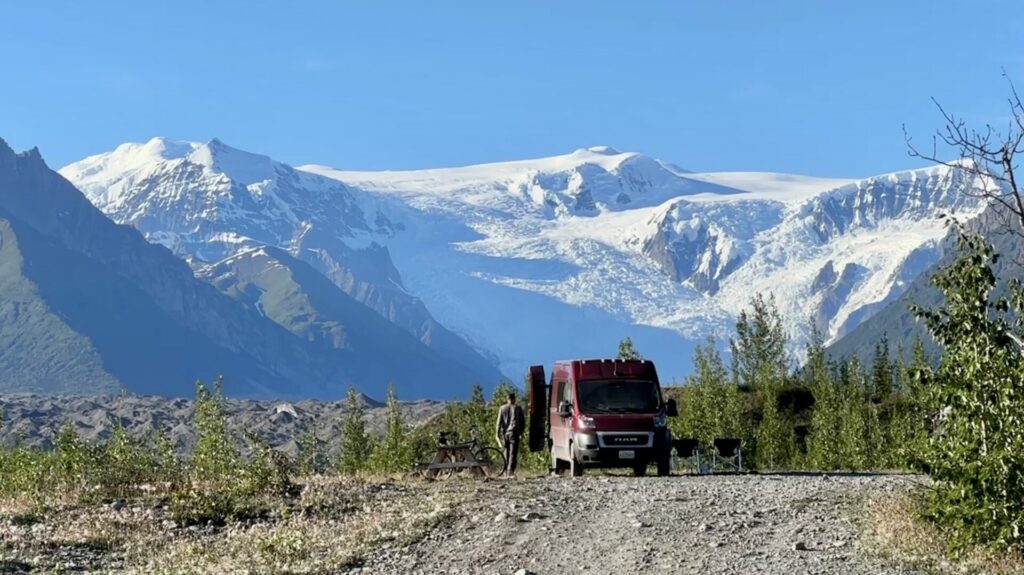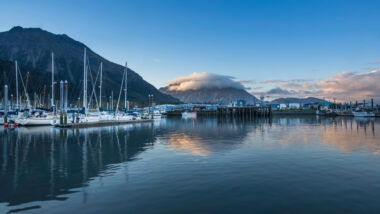Table of Contents Show
When RVers head north to Alaska, most want to see the towering peak of Denali or the bears and salmon of Katmai. But if you don’t have Wrangell-St. Elias National Park and Preserve on your itinerary, consider adding it.
This special park is one of spectacular beauty, but it’s most well-known for its massive size. Let’s dive in and look closer at this Alaskan park and what makes it unique!
Where Is Wrangell-St. Elias National Park?
Our nation’s largest national park lies in the largest state. Wrangell-St. Elias National Park sits in southeastern Alaska, directly south of Tok. The Copper Center Visitor Center Complex lies ten miles south of Glennallen from the intersection of the Glenn Highway and the Richardson Highway.
This is the main visitor center in the national park, and it sits about 200 miles northeast of Anchorage and 250 miles southeast of Fairbanks.

How Big Is Wrangell-St. Elias National Park?
Alaska has seven of the top ten largest national parks in the United States. Wrangell-St. Elias National Park covers over 13.2 million acres. Gates of the Arctic National Park is next on the list at around 8.5 million acres. Not only is Gates of the Arctic the second-largest national park, but it’s also the farthest north, situated entirely north of the Arctic Circle.
It’s hard to wrap your mind around just how big this national park is. So what is 13.2 million acres? You could fit six Yellowstones inside this park. Or you could put Yellowstone, Grand Canyon, Glacier, Olympic, and Yosemite National Parks inside its borders.
What Makes Wrangell-St. Elias National Park Unique?
It’s not just the massive size that makes Wrangell-St. Elias National Park special. This park is home to four mountain ranges, thousands of miles of glaciers, and the largest icefield in North America. It also has North America’s largest population of Dall sheep. Let’s learn more about what makes this national park unique!
Getting There Is Half the Fun
Most national parks in the Lower 48 are reached by traveling an interstate or at least a paved highway. Even though they may be remote, getting to the visitor center is relatively easy.
Wrangell-St. Elias National Park, on the other hand, is unique because you have to drive 60 miles of unpaved road and then take a footbridge to the towns of McCarthy and Kennecott. It’s truly out in the middle of nowhere.
Keep in Mind: The worst part of driving on the Alaska Highway is Destruction Bay. But these tips will help you along the way!

Restoration of an Old Mining Town Is Underway
The National Park Service is restoring the old mining town of Kennecott, and it looks great so far! Kennecott is listed on the National Register of Historic Places and is designated as a National Historic Landmark.
You’ll find a General Store, Post Office, Blackburn School, Recreation Hall, Railroad Depot, Power Plant, and more in this 20th-century copper mining town.

The Park Superlatives Are Mind-Blowing
Wrangell-St. Elias National Park isn’t just the largest national park in America. It also has the largest wilderness area in the National Wilderness Preservation System.
It’s designated as a World Heritage Site with Glacier Bay National Park & Preserve, the Canadian Kluane National Park and Reserve, and the Canadian Tatshenshini-Alsek Provincial Park. This region provides the world’s largest international protected wilderness.
In addition, Mount St. Elias is the second-tallest mountain in the United States after Denali. It towers over 18,000 feet. The Malaspina Glacier is the largest Piedmont glacier in the world, covering over 1,500 square miles.
There Are Many Glaciers
As mentioned, the Malaspina Glacier is the largest Piedmont glacier in the world. It’s larger than the entire state of Rhode Island.
The Nabesna Glacier is about 53 miles long; it’s the longest valley glacier in North America and the world’s longest interior valley glacier. The Hubbard Glacier is one of North America’s largest and most active tidewater glaciers.
Keep in Mind: If you’re planning a trip to Alaska, we recommend booking a tour to see the Aialik Glacier up close!
There Are Many Mountain Peaks
There are four major mountain ranges within this national park: Wrangell, St. Elias, Chugach, and the eastern part of the Alaskan Range. The national park has nine of the 16 highest peaks in the United States.
Mt. Wrangell stands at 14,163 feet tall and is one of the largest active volcanoes in North America. It’s also the only active volcano in Wrangell-St. Elias National Park.

What Can You Do At Wrangell-St. Elias National Park?
Many people bask in the natural wonders that surround every vista in this national park. It’s mind-boggling and awe-inspiring. But while you’re there, you can also take ranger-guided tours and attend interpretive talks to learn more about the park’s history and geology. The Kennecott and Nabesna Road areas have day hiking trails.
Mountaineering and backcountry hiking are permitted but should only be done by experienced climbers and hikers. The rugged and underdeveloped terrain poses unique challenges for adventurers.
Several outfitters offer kayaking tours, boating trips, and sport-hunting excursions. With so much land and water, Wrangell-St. Elias National Park is an outdoor playground but must be respected for its challenging wilderness.
Is Camping Permitted in Wrangell-St. Elias National Park?
Camping is permitted. Areas along Nabesna Road, McCarthy Road, and Kennecott offer various options. All sites are first-come, first-served. No locations provide amenities, and most spots are designated for tents or small RVs.
There are private campgrounds located outside the national park in Cooper Center. Northern Nights RV Campground offers full hookups that can accommodate any size rig. Kenny Lake Mercantile and RV Park offers electric sites, a portable water station, and a dump station.

Are Pets Allowed In Wrangell-St. Elias National Park?
Dogs must remain on a leash at all times. They can go with owners on backcountry trails and through the grounds of the Kennecott Mines National Historical Landmark area. However, they can’t enter public buildings in the park.
Because they permit trapping inside the national park, it’s critical that you keep your pets leashed and have complete control over them during your visit to keep them safe.
How Many National Parks Are in Alaska?
There are eight national parks in Alaska. Denali National Park and Preserve is home to the tallest peak in North America. Wrangell-St. Elias and Gates of the Arctic and Preserve are the two largest parks in the country. Just south of Wrangell-St. Elias National Park is Glacier Bay National Park and Preserve.
Located on the Kenai Peninsula, Kenai Fjords National Park is home to dozens of glaciers. Katmai National Park and Preserve is a visitor favorite because of the large salmon and brown bear populations. Kobuk Valley National Park and Lake Clark National Park and Preserve round out the rest of Alaska’s national parks.
Plan a Visit to America’s Largest National Park
You need to visit Wrangell-St. Elias National Park and Preserve for yourself. Even then, it’s impossible to wrap your mind around just how large it is. Most visitors only see a tiny glimpse of this protected wilderness.
From majestic mountains to sprawling glaciers, the immensity of this national park will captivate you. And maybe you’ll also see a moose, caribou, bear, or Dall sheep during your visit.
What are you most looking forward to when you visit America’s largest national park?






